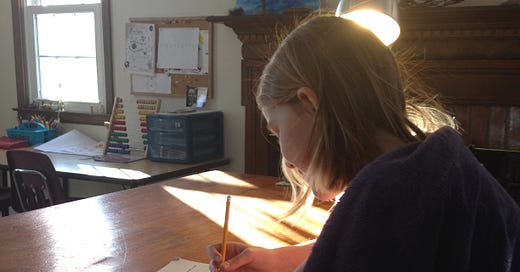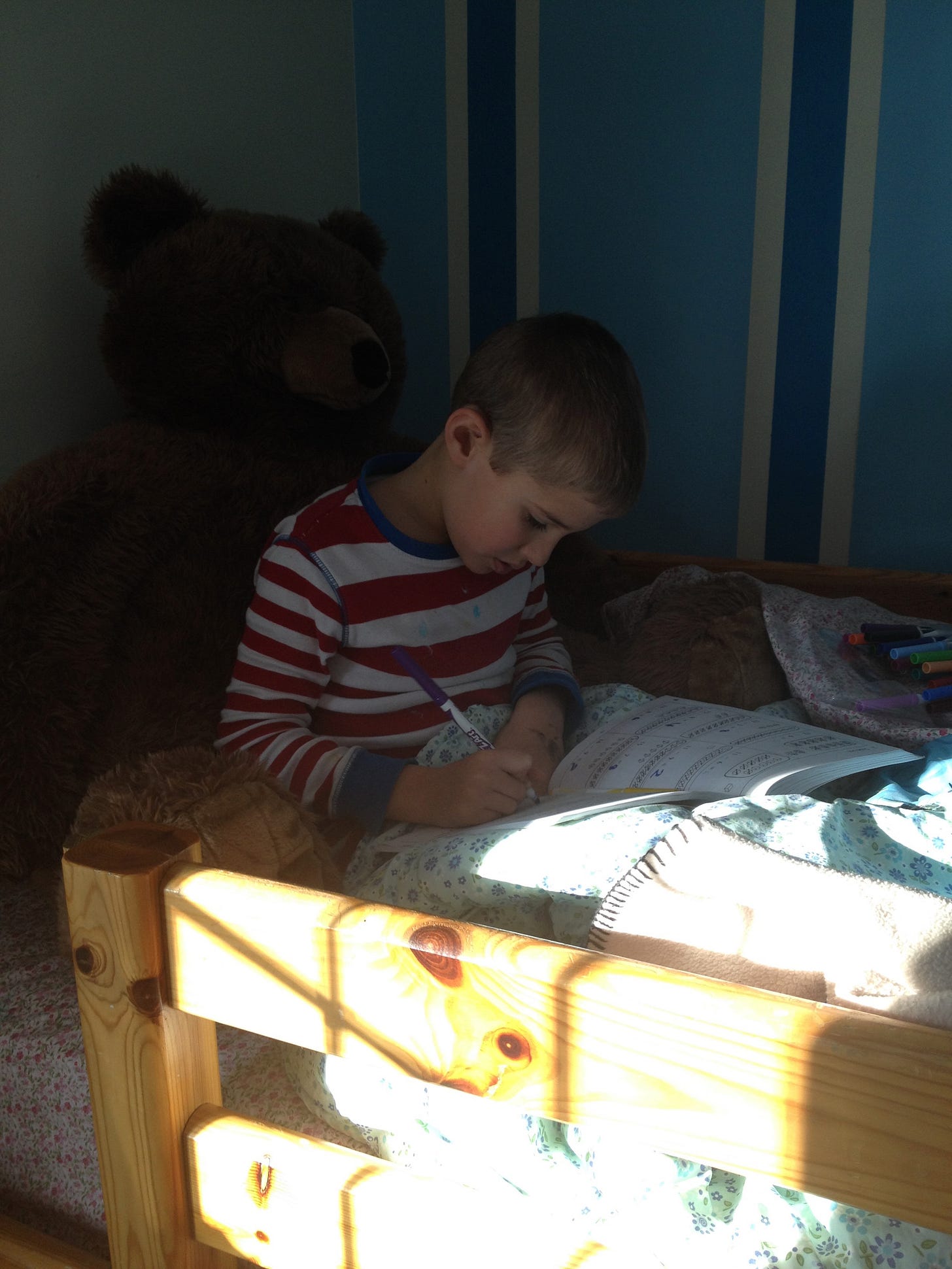Schools have always been challenging for dyslexic students. But, the current “right to read” movement, which evolved in part out of dyslexia advocacy, and which has resulted in laws across the country requiring structured literacy in elementary classrooms, would seem to suggest that the atmosphere is changing for our most vulnerable readers. When my children were young, the elementary schools in my town were all in on balanced literacy and Lucy Calkins’ Units of Study. Since I was unable to afford a dyslexia school, homeschooling was really my only option.
Now that my state requires structured literacy in the elementary classroom, I have asked myself if public school would be an option today, or does it still make for sense for parents to homeschool their dyslexic children.
In an October article in the Reading League Journal, Sharon Vaughn and Nathan Clemons address misconceptions about the science of reading. The idea that 95% of students will learn to read proficiently if provided high quality instruction is one of the misconceptions they address. While there is no evidence base for this claim, they do suggest that reading outcomes for most students will improve if schools have the resources, skills, and time to provide effective instruction. I found this tripartite claim intriguing and thought I might use it to evaluate where schools are currently and how this might influence a parent’s decision to homeschool or not.
Resources
The science of reading movement has, to date, focused primarily on resources. Schools have been using flawed curriculum (balanced literacy) for decades and reading proficiency scores are dismal, so reading laws primarily require schools to use evidence-based curriculum. But big change is hard. In my state, half the towns applied for waivers to be exempt from state-approved curriculum. Balanced literacy is embedded deep in the psyche and the pocketbook of a generation of teachers and administrators. It is taking enormous effort just to get high quality curriculum as basic, whole class literacy instruction. The rallying cry of many experts is “fix Tier 1 first,” meaning you can’t worry too much about what is happening in intervention until you get good first-line instruction in place for everyone, a sort of oxygen mask argument.
The problem for dyslexic kids is that even good Tier 1 instruction will likely not be enough. They need intervention. There is still quite a bit of debate in the education community about what dyslexia intervention should look like (although I think it is fair to say that there is not much debate among dyslexia experts and trained interventionists about what that should look like). For too many years, schools have not only been using ineffective programs for general instruction, but they have also been trapping dyslexic students in ineffective remediation. Yet the hurdle of changing whole class instruction is so high there is currently not enough focus on what dyslexia remediation should ideally look like. The focus currently is on what is best for most kids, but as we dyslexia parents know, our square pegs are not most kids.
In addition, dyslexic kids need full access to content while they are learning to read. As a homeschooler, I provided that access for my children, reading aloud in every subject, acting as scribe, providing audiobooks for pleasure reading and literature. Schools, as they are currently structured, don’t have the resources to do this. Even if your dyslexic child is getting daily, high quality reading intervention, they are plopped right back into the general classroom for social studies and science and math. Most schools are not set up to support dyslexic children across the curriculum.
Skills
High quality curriculum won’t be effective without teachers trained in the science of reading. Unfortunately, as a recent article found, most teachers are still not learning about the science of reading in their teacher prep programs and only about a quarter leave those programs prepared to teach reading. This article from NC is a good example of the genuine odyssey states are on to try and get colleges of education in line with the science of reading.
Generally, teachers are underprepared to teach reading. But, even if a teacher is trained to implement whole class structured literacy, that does not ensure that they are adequately trained to remediate dyslexia. As Emily Gibbons and Casey Harrison point out over and over again on their fabulous Together in Literacy podcast and blog, teachers need specific training in the specific types and styles and progression of interventions needed for dyslexic students.
Schools are rapidly adopting multi-tiered systems of support (MTSS) for reading intervention, focusing on ongoing assessment to identify specific skill deficits in struggling students, providing extra practice for those skills with the intent of catching-up struggling readers and folding them back into whole class instruction. This narrow, isolated skill-based approach to intervention is not ideal for dyslexic students who would be best served by a comprehensive program taught by a skilled dyslexia practitioner. I have even heard some MTSS advocates argue that principals and cafeteria workers and para-professionals and anyone available in the school could be drafted to provide additional practice for struggling readers.
It took me about ten years and two children to feel highly skilled teaching reading to my dyslexic kids. By the third child, I knew way more than I could have imagined when I started. The idea that teachers can be brought up to speed with a few sessions of PD is fanciful. Even though parents may not know how to provide dyslexia intervention when they begin, they have one enormous advantage over schools — they are deeply motivated to learn and get it right. I refused to give up until each of my children had the skills they needed to be successful. With a high quality, scripteddyslexia program, parents can exceed the remediation dyslexic children are receiving in school.
Time
The real clincher for me is time. Dyslexic kids require a slower pace than non-dyslexic kids. Just like all students, they need spaced repetition and retrieval practice, but they need more of it and they need it spaced out over more time. MTSS does the opposite of this. It asks dyslexic kids to learn at a faster pace than their neuro-normal peers, starting from behind but still catching up to their class. Double and triple doses of reading instruction crammed into the same 3rd grade window are an ineffective, demoralizing and unfair demand to put on dyslexic children. It took my youngest child through 6th grade to do nine levels of Barton Reading and Spelling. But his slower pace and full comprehensive remediation had stellar results.
Homeschooling gave us the gift of time. We did not have to squeeze our remediation into an arbitrary 3rd grade deadline. I not only wanted my children to learn to read, I wanted them to have a full academic education and time to be full human beings. I did not want them to miss out on academic enrichment so they could have two or three sessions of daily reading intervention. I did not want them to miss recess or extend their school day just because it took longer for them to learn to read. I did not want them to feel the shame of being behind. I did not want them to be labeled “struggling.” I did not want their primary identity to be one of failure. I wanted them to be full, amazing, brilliant human beings learning at the pace that made sense for their diverse brains. As much as I would like to say the “right to read” movement has solved the problem of being a dyslexic student in our public schools, it has not. As much as the needle has moved, I would still homeschool my children today.







Thank you thank you for this post!! My boys just turned 5 last week. One is about 170 pages into “How To Teach your Child To Read in 100 Easy Lessons” and the other is about 100 pages in, still mixing up the phonemes a & e. Dad is dyslexic. Grandpa was probably dyslexic too. Watching them and the science and trends closely.